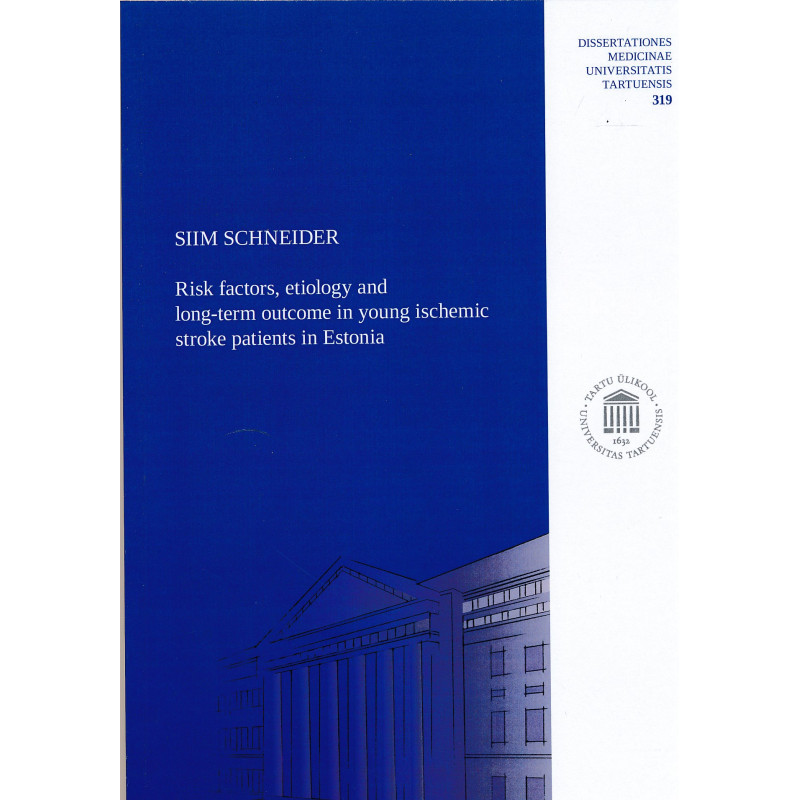



Tartu : University of Tartu Press, 2021
130 p.
ISBN: 9789949037254
Dissertationes medicinae Universitatis Tartuensis, 1024-395X ; 319
Paperback new dissertation.
Stroke often has a devastating impact at a younger age since people at that age usually have the highest burden of family and occupational responsibilities. Incidence of stroke has significantly increased in people under 55 years of age during the last two decades. This increase is mainly due to ischemic stroke, which is caused by impaired blood supply to the brain due to the occlusion of an artery. The increased incidence of cerebral infarction has been explained, among other possible causes, by the significant increase in the prevalence of risk factors – sedentary lifestyle, smoking, obesity, high blood pressure, etc. A study performed on patients aged 18 to 54 years treated in North Estonia Medical Centre and Tartu University Hospital for ischemic stroke between 2003 and 2012 confirmed that traditional risk factors for stroke are common in young people. Approximately half of the patients had arterial hypertension or an elevated blood cholesterol level and around one-third were smokers. High blood pressure, cardiac arrhythmias and other risk factors were more common in young Estonian stroke patients than in other European countries, and for these parameters, young Estonian patients were similar to stroke patients who were several decades older. The study also showed that young patients who developed pneumonia or other infections soon after stroke had a significantly higher five-year mortality rate. The reason for this is not fully known. Possible reasons could be prolonged hospital stay and delayed initiation of rehabilitation or an inflammatory reaction caused by infection which impairs the brain’s ability to recover. On average, five years after stroke, young stroke patients assessed their quality of life as significantly worse than those without stroke. The study showed that quality of life was assessed as low by patients who had, among others, symptoms and signs of depression or were unable to work full-time. Surprisingly, patients who recovered from stroke relatively well assessed their quality of life as even better than healthy people. This is likely associated with the general feeling of gratitude that has arisen in spite of possible residual signs of the disease.